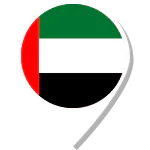Tools and Tips for Streamlining Your Design Workflow
Humantek team
August 22 2023
1. Introduction
In a time where design is a key differentiator for businesses, brands, and personal projects, success depends on having a productive design workflow. This blogpost focuses on logo design services, emphasizing the importance of completing every design phase from inspiration to finalization for aesthetically appealing and significant outcomes, providing in-depth tools and directions to enhance your design workflow.
The Value of an Effective Design Process
An effective design workflow is more than simply a process; it’s a calculated method that guarantees designers can easily deal with obstacles in the way of their creativity, time restraints, and client expectations. Having a more efficient workflow enables designers to devote more time to originality and creativity, producing designs that are not only aesthetically pleasing but also strategically sound.
Function of Logo Design Companies
In today’s design environment, logo design services are essential since they provide specialized experience in creating distinctive and memorable brand identities. These services are crucial partners for companies and people looking to establish a distinctive visual identity since they comprehend the subtleties of visual communication and brand representation. While concentrating your creative energy on other design elements, integrating logo design services into your workflow will help you access expert knowledge.
In the sections that follow, we’ll examine different stages of the design workflow and give you a variety of tools and practical advice to improve your design process.
2. Pre-Design Phase
A well-organized pre-design phase sets the stage for a project’s success before users ever start using design software. Setting project goals, doing extensive research, and brainstorming new design directions are all part of this phase.
Outlining the Project's Objectives and Goals
Clear project goals and objectives act as compass points throughout the entire design process. To gather crucial information about the brand’s values, target market, and preferred design aesthetics, use project briefs and client consultations. Project management software like Trello or Asana and other similar tools can help organize and visualize project needs.
Engaging in Extensive Research
Effective design is built on solid research. Research the market, rivals, and historical design patterns in-depth. Online sources, industry studies, and social media platforms offer insightful information. Data-driven perspectives on audience preferences are provided by programs like SEMrush and Google Trends.
Techniques for Brainstorming and Sketching
The process of putting your thoughts on paper is really important. You can quickly explore a wide range of design concepts by brainstorming and sketching. Your creative allies in this stage can be as basic as a pencil and paper or computerized sketching devices like Wacom. Tools for mind mapping, such as MindMeister, help organize ideas and relationships.
3. Innovative Phase
Once you have a strong foundation from the pre-design stage, it’s time to use cutting-edge design tools and techniques to realize your creative vision.
Making Use of Advanced Design Software
The centerpiece of the design phase is design software. The industry continues to use Adobe Creative Cloud, which includes Photoshop and Illustrator. Other strong options that may accommodate various design tastes include Sketch, Figma, and CorelDRAW. These programs offer a huge selection of functions for vector drawings, picture editing, and page layout.
Making use of Design Tools Driven by AI
The field of design has seen impressive advancements in artificial intelligence. Instant logo generation is available using AI-powered apps like Canva, Tailor Brands, and Looka based on user inputs. They might not be able to take the role of human innovation, but they can act as quick prototypes or sources of inspiration.
Suggestions for Logo Typography
The use of typography is crucial in logo design. The readability and beauty of a logo can be significantly impacted by choosing the right typefaces, spacing, and alignment. A vast library of typefaces is available for experimentation through programs like Adobe Fonts and Google Fonts. For exact control over letter spacing, pay attention to kerning, tracking, and leading.
A refined design workflow develops as the compass directing designers through the difficulties of creativity and strategic intent in a field where design serves as a beacon of distinction. Design excellence is enabled by the blending of traditional craftsmanship and cutting-edge technology, and the symbiotic relationship with logo design services intensifies the visual impact and brand resonance. We hope your creative expedition will be defined by creativity, efficiency, and a legacy of enthralling designs that endure the test of time as you set off on your design journey, armed with the knowledge and resources shared in this guide.







